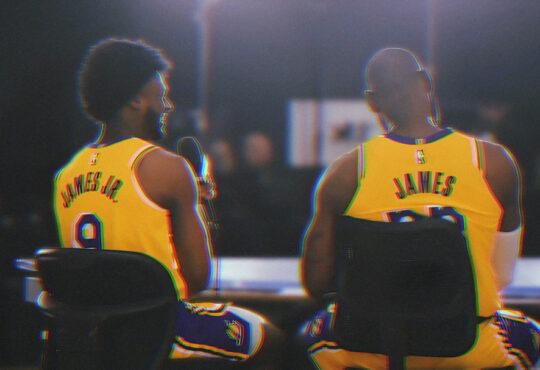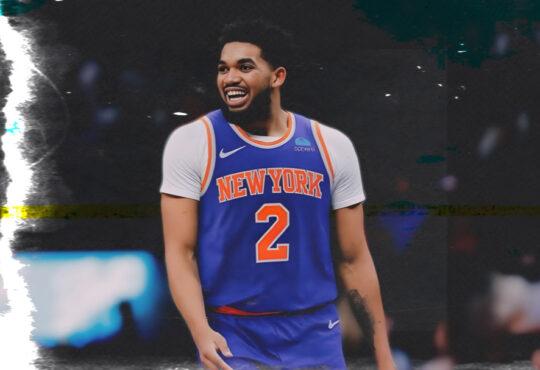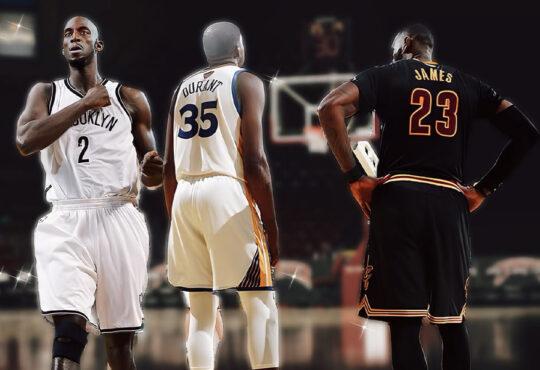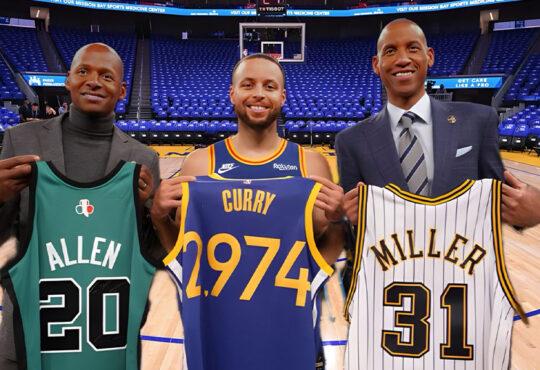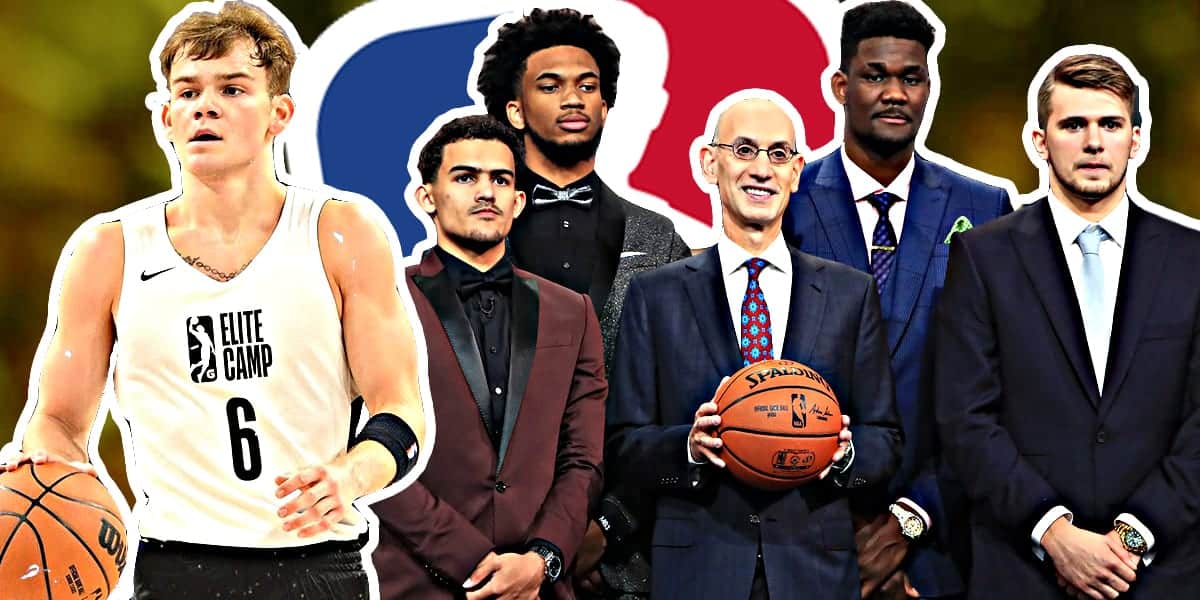
How Do Players Get into the NBA Draft?
The NBA Draft is the moment of truth for many young basketball players. That night is a crossroads for a lot of youngsters who were dreaming to make it to the big league. Some of them hear their name being called some of them are left disappointed and are looking for other ways to make their basketball dream come true.
In this article, we will thoroughly describe all the facts that determine a players’ eligibility of entering the NBA draft.
The NBA draft dates back to 1947 in which the teams from the NBA can draft players who are eligible and willing to join the league. These are typically college basketball players, but international players are also eligible to be drafted and their number increases every year.
College players who have finished their four-year college eligibility are automatically eligible for selection, while the underclassmen have to declare their eligibility and give up their remaining college eligibility.
International players who are at least 22 years old are automatically eligible for selection, while the players younger than 22 have to declare their eligibility.
Players who are not automatically eligible but have declared their eligibility are often called “early-entrants” or “early-entry candidates”.
Eligibility rules for prospective players have changed several times during the history of the league. No player may sign with the NBA until they are 18 years or older. Players who have played at least one year of college basketball are eligible for the NBA draft. This has been colloquially called the one-and-done rule, with such players called “one-and-done players”. If a player graduates from high school and does not go to college has to play basketball elsewhere for a year to become eligible for the NBA draft.
Spencer Haywood vs. NBA
The first major challenge to the NBA’s eligibility rules came from Spencer Haywood back in 1968. He graduated from high school at a time when college freshmen were not allowed to play varsity sports for NCAA member schools.
Haywood played a year at a Colorado junior college, followed by a season at the University of Detroit. After the 1970–71 season, he left college for the NBA’s rival at the time, the ABA, which had no rule restricting college underclassmen from entering the league, and had a spectacularly successful rookie season with the Denver Rockets being named the ABA’s Rookie of the Year and MVP.
Near the end of the season, Haywood turned 21. Shortly after the season ended, he repudiated his contract with the Rockets, claiming he had been defrauded.
Haywood then signed a contract with the Seattle SuperSonics, which put him and the Sonics on a collision course with the NBA, as he was only three years removed from his high school graduation.
The NBA threatened to disallow the contract and impose sanctions against the Sonics. Haywood responded by filing an antitrust suit against the league, seeking an injunction to prevent the NBA from disallowing the contract or punishing the Sonics. The case eventually reached the U.S. Supreme Court, which issued a 7–2 decision in Haywood’s favor in 1971.
After the decision, the NBA allowed players to leave college early as “hardship cases”, which essentially meant that the player had to prove financial hardship.
High-school draftees
As a consequence of the aforementioned Haywood decision, and following soon after, three high schoolers chose to enter the professional ranks without ever enrolling in a college. The first was Moses Malone, who went to the ABA upon his high school graduation in 1974, almost immediately establishing himself as a star of the future.
After the ABA–NBA merger in 1976, Malone’s career continued on its upward trajectory, ultimately earning him three NBA MVP awards, four appearances on the All-NBA First Team, 12 consecutive NBA All-Star Game appearances, an NBA title, a place among the 50 Greatest Players in NBA History, and enshrinement in the Naismith Memorial Basketball Hall of Fame.
In 1975, Darryl Dawkins and Bill Willoughby both went to the NBA from high school. Dawkins had a solid 14-year career in the NBA, while Willoughby was no more than a journeyman in eight NBA seasons.
After Dawkins and Willoughby, no high school player went directly to the NBA for 20 years, although Lloyd Daniels and Shawn Kemp went to the NBA without having played college basketball as both had enrolled in college, but never played.
That would change in 1995 with the arrival of future NBA MVP Kevin Garnett, who was selected fifth overall. The following year, another future MVP in Kobe Bryant and a future All-Star in Jermaine O’Neal were first-round picks out of high school. Years after that saw at least one, and often more, high schoolers drafted, and some of them were even selected first overall like Kwame Brown in 2001, LeBron James in 2003) and Dwight Howard in 2004.
However, the influx of high schoolers caused considerable controversy. When the NBA and its player’s union negotiated a new Collective Bargaining Agreement in 2005, NBA Commissioner David Stern publicly called for a higher age limit of 20, stating that he wanted the league’s scouts and general managers out of high school gyms and that too many young urban Americans incorrectly saw the NBA as a sure path to fame and financial security.
Most of the players were opposed to an age limit. Ultimately, the union reluctantly agreed to an age limit of 19, accepting it in exchange for tweaks to salary cap rules that were favorable to the players’ interests.
Current eligibility rules
The current eligibility rules were established under the NBA’s 2005 collective bargaining agreement, which expired in 2011, resulting in a lockout. The previous CBA, approved in December 2011, made no changes to the draft rules but called for the NBA and its player’s union to form a committee to discuss draft-related issues.
In 2016, the NBA and NBA Players Association met to work on a new CBA, which both sides approved in December of that year. This most recent agreement started with the 2017–18 season and will run through 2023–24, with a mutual opt-out after 2022–23. The basic rules that started in the 2006 draft are:
- All drafted players must be at least 19 years old during the calendar year of the draft. To determine whether a player is eligible for a given year’s draft, subtract 19 from the year of the draft. If the player was born during or before that year, he is eligible.
- Any player who is not an “international player”, as defined in the CBA, must be at least one year removed from the graduation of his high school class.
Stern stated the rules were business-related and not a “social program”, citing the need to see players perform against higher competition before they are evaluated for valuable draft picks. The rule effectively mandated that players spend at least one year in college. High school players who would otherwise have jumped directly into the NBA were instead playing in college for the required year before leaving and entering the draft—a phenomenon known as one and done.
The NBA G League is one alternative to college. Players can earn five-figure salaries, but the level of competition is possibly lower than at the Division I level in college. Some players, most notably Brandon Jennings, have also played overseas.
Changes for college underclassmen in 2016
In March 2015, following a series of meetings that began at the 2014 men’s Final Four, the NBA, NCAA, and the trade association for college men’s coaches, the National Association of Basketball Coaches, announced a plan that would give college underclassmen a better opportunity to make an informed decision about their NBA status than the then-current system. Under this plan:
- The NCAA would no longer automatically treat entry into the draft as forfeiture of remaining college eligibility. Instead, it would allow underclassmen to withdraw from the draft in late May, about five weeks after the then-current deadline, and retain their remaining eligibility (as long as they do not sign with an agent or a professional basketball team in the meantime). The NBA’s early-entry and withdrawal deadlines, respectively 60 days and 10 days before the draft, would not change because they are written into the league’s collective bargaining agreement.
- The NBA would expand its invitation-only draft combine, currently held in Chicago, to include players with remaining college eligibility (who would also have to be invited in order to attend). The stated purpose of this expansion was to allow underclassmen to receive feedback from NBA teams on their draft prospects. According to one NCAA executive, the expanded combine would involve from 20 to 30% more players than the approximately 70 who participated at that time.
The NCAA rule change was formally presented by the NCAA men’s basketball oversight committee in June 2015 and was approved by the NCAA Division I council on January 13, 2016.
The new rule, which took effect with the 2016 draft, specifically sets the new withdrawal date at 10 days after the end of the NBA draft combine. Additionally, players may declare for the draft multiple times without losing college eligibility, as long as they withdraw before the new deadline without hiring an agent or signing a professional basketball contract, and are now allowed to attend the draft combine and one tryout per year for each NBA team without losing college eligibility.
However, it has been stated that current commissioner Adam Silver has been working to change this rule and meeting with NCAA officials to make the changes for the betterment of the NBA and NCAA basketball players, teams, and coaches alike.
How many NBA Drafts can a player enter?
Although a player can only be drafted into the NBA once, he can actually enter the NBA Draft twice. The rules governing it read as:
- No player may sign a Contract or play in the NBA unless he has been eligible for selection in at least one NBA Draft.
- No player shall be eligible for selection in more than two NBA Drafts.
It is clear from this that you have to enter the NBA Draft at least once, in order to be signed by a team. If you are not selected you can choose to enter the draft a second time, but that is it. Once you have entered the draft once and not been selected, you would be free to sign with any NBA Franchise that is willing to offer you a contract. This is what is known as being an undrafted player. Ben Wallace of the 2004 Pistons title team is probably the most famous player who went this route. More modern examples would be Duncan Robinson of the Heat or Lou Dort of the Thunder.
Can a player refuse to play for the NBA team that drafted them?
Once a player has been drafted to an NBA Franchise they can only sign their Rookie Contract with that NBA team. They do not however have an obligation to sign their contract with the NBA. The team that drafted them will own the draft rights until such a time as the player decides to take up the contract and play in the NBA. Julius Erving famously tried to sign a contract with the Atlanta Hawks after being drafted to the Bucks. He did all this while also under contract with the ABA. Eventually, he would finish his ABA contract after the NBA ruled he was only eligible to play for the Bucks.
Is NBA Draft Combine mandatory?
The NBA Draft combine is not mandatory, nor is sharing medical records with all franchises. It isn’t uncommon for top prospects to have agent representation that plant rumors or only share medical records with certain teams. Many players only work out with teams they wish to be drafted by. While this doesn’t prevent a franchise from making a bold decision and taking the player they want, it can signal that wasting your 9th overall pick on a player that clearly doesn’t want to be at your franchise may not be the best long-term move. For players with lower draft stock, the NBA Draft combine can be an absolute must to boost their profile and get noticed. Remember the higher a player is taken in the draft, the more money they will earn on their Rookie contract.

